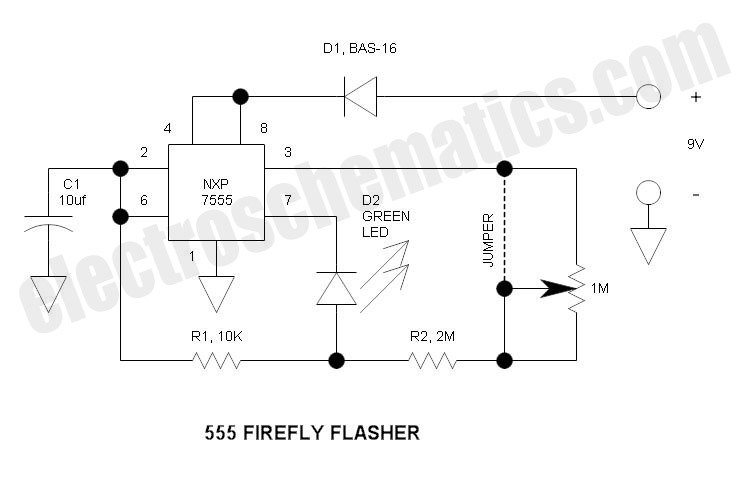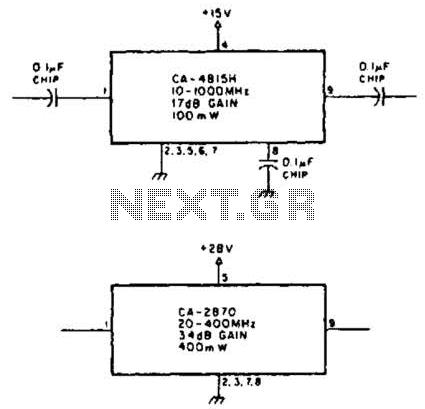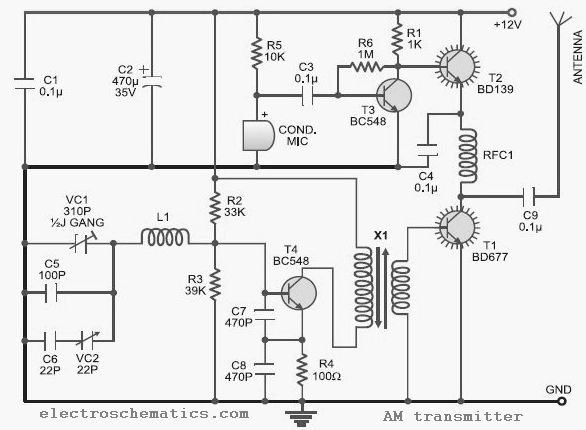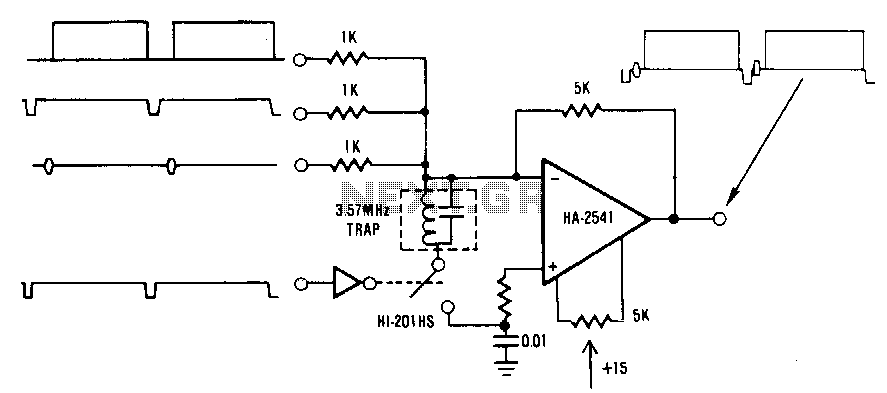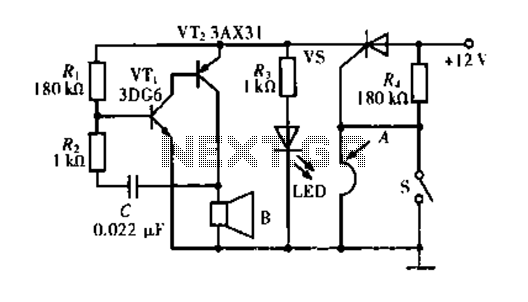
Video Preamp Circuit
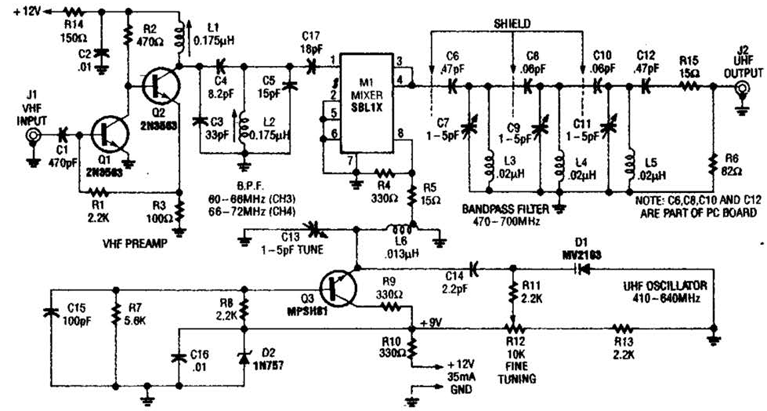
An NE592 or LM733 is utilized as a general-purpose video amplifier in this schematic. J2 and J3 deliver two anti-phase outputs. R2 functions as a gain control. The bandwidth is approximately 100 MHz.
The NE592 and LM733 are integrated circuits designed for high-speed applications, making them suitable for video amplification tasks. In this configuration, the amplifier is set up to provide two outputs, J2 and J3, which are 180 degrees out of phase with each other. This anti-phase output configuration is beneficial for differential signaling and can help reduce noise and improve signal integrity in video applications.
The gain control resistor, R2, allows for adjustment of the amplifier's gain, enabling the user to optimize the output level based on the input signal strength and the requirements of the subsequent circuitry. This flexibility is essential in video applications where signal levels can vary significantly.
With a bandwidth of approximately 100 MHz, the circuit is capable of handling high-frequency signals, ensuring minimal signal degradation across the frequency spectrum typically encountered in video signals. This characteristic is crucial for maintaining the quality and clarity of the video output, particularly in high-resolution applications.
Overall, this schematic represents a robust solution for video amplification, leveraging the high-speed capabilities of the NE592 or LM733 to deliver reliable performance in various electronic systems.An NE592 or LM733 is used as a general-purpose video amplifier in this schematic.J2 and J3 provide two anti-phase outputs.R2 is a gain control.The bandwidth is about 100 MHz 🔗 External reference
The NE592 and LM733 are integrated circuits designed for high-speed applications, making them suitable for video amplification tasks. In this configuration, the amplifier is set up to provide two outputs, J2 and J3, which are 180 degrees out of phase with each other. This anti-phase output configuration is beneficial for differential signaling and can help reduce noise and improve signal integrity in video applications.
The gain control resistor, R2, allows for adjustment of the amplifier's gain, enabling the user to optimize the output level based on the input signal strength and the requirements of the subsequent circuitry. This flexibility is essential in video applications where signal levels can vary significantly.
With a bandwidth of approximately 100 MHz, the circuit is capable of handling high-frequency signals, ensuring minimal signal degradation across the frequency spectrum typically encountered in video signals. This characteristic is crucial for maintaining the quality and clarity of the video output, particularly in high-resolution applications.
Overall, this schematic represents a robust solution for video amplification, leveraging the high-speed capabilities of the NE592 or LM733 to deliver reliable performance in various electronic systems.An NE592 or LM733 is used as a general-purpose video amplifier in this schematic.J2 and J3 provide two anti-phase outputs.R2 is a gain control.The bandwidth is about 100 MHz 🔗 External reference
